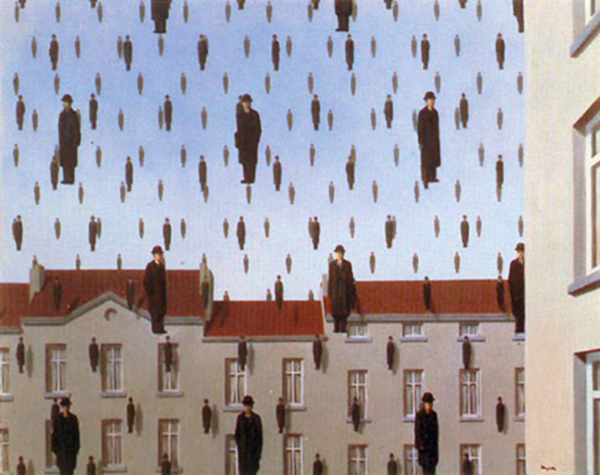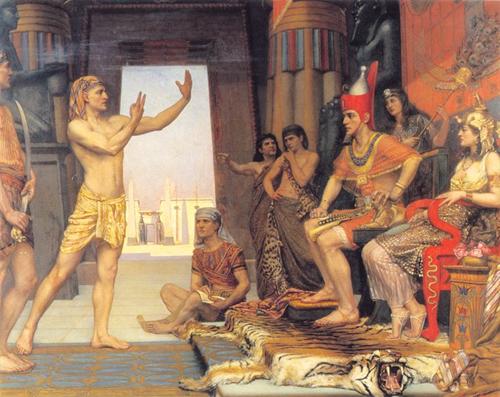WELCOME TO DREAMSCAPES II !
"La Reproduction Interdite"
Rene Magritte (1898-1967) Challenged human assumptions of reality and gave new meaning to what we see.
"Barramundi Dreaming" by Arone Meeks
It's from the land of Aborigine magic and sorcery. Explaining chaos and order in nature. A Dreaming is creation—the infinite spiritual cycle. The Spirit Child is in the center and exists before, during and after life on earth. It is the eternal part of you.
Aboriginal art is a form of Magical Realism where magical elements blend to describe a deeper reality. Because western man tends to be more concrete in his thinking and more conservative in his beliefs he may have cut himself off from a mythology that in his current state he cannot hope to ever understand. The art and stories of those who still see the world as a creative and magical place cannot be fully understood by those who have lost their childhood wonder and have adopted the limiting reality of the 'fully adult.'
"The Knight's Dream" by Raphael. It is a vanitas still life. A lot of power symbols here e.g. crown, papal tiara, knights armor, a globe suggesting the desire to conquer. This is an allegorical dream representing vanity. The two skulls represent the transience of life and it's superficiality.
"The Nightmare" by Henry Fuseli (1781). Note the incubus on her chest and the mare sticking it's head out from the curtain. Was this a play on the title 'the Night Mare', or was it as some say symbolic of blind and phallic lust? Did Fuseli's obviously sexual painting anticipate the dream theories of Freud? Interestingly a print of this painting hung in Freud's study.
This painting was considered quite bold during its time and initially not well accepted. The drapes from which the blind horse is peaking are both a means of connecting and separating the dreamer and her dream. Overall the effect produced a sense of mental theater.
The following poem by Erasmus Darwin was created for this painting's first exhibition in 1783:
"Night-Mare"
|
|
"So on his Nightmare through the evening fog Flits the squab Fiend o'er fen, and lake, and bog;
Seeks some love-wilder'd maid with sleep oppress'd,
Alights, and grinning sits upon her breast."
|
|
"Nuns Dream" by the Neoclassical painter Karl Briulloff (1831) currently in St Petersburg at the State Russian Museum. I would rename this painting, "You can limit their waking life, but you can't limit the the secret desires of their dreams."
Briulloff was born in France as Carlo Brulleau, moved to Russia in the 1820's, but did this watercolor while in Italy. He did two other paintings of women and their dreams; "Dreams of a grandmother and her granddaughter" (1829) and "Dreams of a girl before sunrise (1830). He used a Renaissance paint technique known as Chiaroscuro which sharply contrasts the light and shadow and brings out the three dimensional quality of a human. Reconciling the opposition/contrast between a person's light and dark sides is classical Jungian Individuation. Note that the image that most men of the period even up through Freud was that women, when they dreamed, dreamed mainly of men, or of being a siren/temptress. Typical male ego bias of the time.
This is a painting by Deborah Koff-Chapin (1989) From the book
At the Pool of Wonder by Marcia Lauck, Bear and Co., Santa Fe, NM, 1989 pg.72. The chapter is labeled "Birthstone" which told of a 1986 dream by Marcia Lauck. Chapin uses a painting technique she calls Touch Drawing. I've watched her do these on Whidby Island in the islands off Seattle, WA. She first lays paint upon a sheet of paper, then lays another sheet on top of that. Closing her eyes and going into what appears to be a light trance she draws freehand with her fingers and fingernails. Magically a form appears on the underside of the sheet of paper!
This painting reminds me of Ouroboros, the dragon of dreams, the symbol of life's eternal cycle; birth, death, rebirth. In the dream Marcia shares that the wheel seen in her dream represents her. As it enters her, it shatters her point of focus with everything becoming one.

René Magritte's Golconda
Charly Herscovici, who was bequeathed copyright on the artist's works, commented on Golconda:
|
|
"Magritte was fascinated by the seductiveness of images. Ordinarily, you see a picture of something
and you believe in it, you are seduced by it; you take its honesty for granted. But Magritte knew that
representations of things can lie. These images of men aren't men, just pictures of them, so they don't
have to follow any rules. This painting is fun, but it also makes us aware of the falsity of representation."
—From Wikipedia: an interview with Charly Herscovici
|
This idea is like a dream in that the dream is but an illusion, a false representation of reality and therefore doesn't have to follow any rules. But look closely at your dreams, there is always an internal consistency. As with this painting, what seems rule-less is also an illusion. There is a pattern, or rule, that these "men" follow i.e. they are all placed in hexagonal formations.

Arthur Reginald— "Joseph interpreting the Pharaoh's Dream" Date: 1894
For more on art and the world of dreams click on the following link:
For a critique of the projected meaning for Henri Matisse's Self-Portrait click on the DreamDragon link below:
|